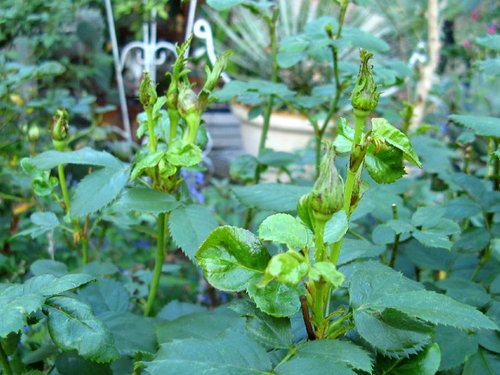Chilli thrips in San Antonio ...
roselee z8b S.W. Texas
11 years ago
Related Stories

SAVING WATERXeriscape Gardens: How to Get a Beautiful Landscape With Less Water
Conserve water and make gardening much easier with the xeriscape approach’s 7 principles
Full Story
TRAVEL BY DESIGNTravel Guide: Austin, Texas, for Design Lovers
You'll find fantastic food along with incredible art and architecture in this capital city, deep in the heart of Texas
Full Story
MONTHLY HOME CHECKLISTSOctober Checklist for a Smooth-Running Home
You're due for some winterizing, like clearing rain gutters and stowing swimsuits — but leave time for a fun project
Full Story
LIFEShare Your Winter Storm Jonas Photos and Survival Tips!
Let’s see your pictures and hear your ideas on how you’re keeping your house warm and staving off cabin fever
Full Story
MOST POPULAR8 Budget-Friendly Ways to Fun Up Your Patio
Amp up the charm, comfort and personality of your outdoor space with drapery, lighting and more
Full Story
HOUSEKEEPINGTo-Dos: Your March Home Checklist
It’s time to rid yourself of winter’s heaviness and set up for spring
Full Story
PETSHouzz Call: Show Us Your Summer-Loving Dog!
Share a photo of your pooch kicking back in the backyard, helping you in the workshop or enjoying your favorite summer getaway
Full Story
MODERN HOMESHouzz Tour: A Cubist Confection Oriented Toward Nature
Dramatic yet understated, a West Vancouver house defers to its woodland and ocean setting
Full Story
FIREPLACESUpdated Woodstoves Keep Home Fires Burning
Better technology means more efficiency than ever for modern woodstoves
Full Story
LIFEYou Said It: ‘Yikes, Tough Crowd’ and Other Quotes of the Week
Some of our favorite quotes this week came straight from the Comments section. See the stories and have your own say
Full Story








plantmaven
mamachile
Related Professionals
Maple Valley Landscape Architects & Landscape Designers · Benbrook Landscape Architects & Landscape Designers · White Oak Landscape Architects & Landscape Designers · Stoughton Landscape Contractors · Danvers Landscape Contractors · Florham Park Landscape Contractors · Fort Mill Landscape Contractors · Huntington Landscape Contractors · Lakewood Landscape Contractors · Lees Summit Landscape Contractors · River Ridge Landscape Contractors · Wanaque Landscape Contractors · Chicago Ridge Landscape Contractors · Kingsburg Landscape Contractors · Missoula Window Contractorsmamachile
roselee z8b S.W. TexasOriginal Author
mamachile
chitralekha
plantmaven
roselee z8b S.W. TexasOriginal Author
roselee z8b S.W. TexasOriginal Author
beachplant
texaspinkpixie
roselee z8b S.W. TexasOriginal Author
wantonamara Z8 CenTex
roselee z8b S.W. TexasOriginal Author
wantonamara Z8 CenTex
roselee z8b S.W. TexasOriginal Author
roselee z8b S.W. TexasOriginal Author
wantonamara Z8 CenTex
roselee z8b S.W. TexasOriginal Author
roselee z8b S.W. TexasOriginal Author
wantonamara Z8 CenTex
rock_oak_deer
wantonamara Z8 CenTex
roselee z8b S.W. TexasOriginal Author
PKponder TX Z7B
roselee z8b S.W. TexasOriginal Author
ilovemyroses
roselee z8b S.W. TexasOriginal Author
Brittie - La Porte, TX 9a
roselee z8b S.W. TexasOriginal Author
roselee z8b S.W. TexasOriginal Author
blueboy1977
roselee z8b S.W. TexasOriginal Author
roselee z8b S.W. TexasOriginal Author